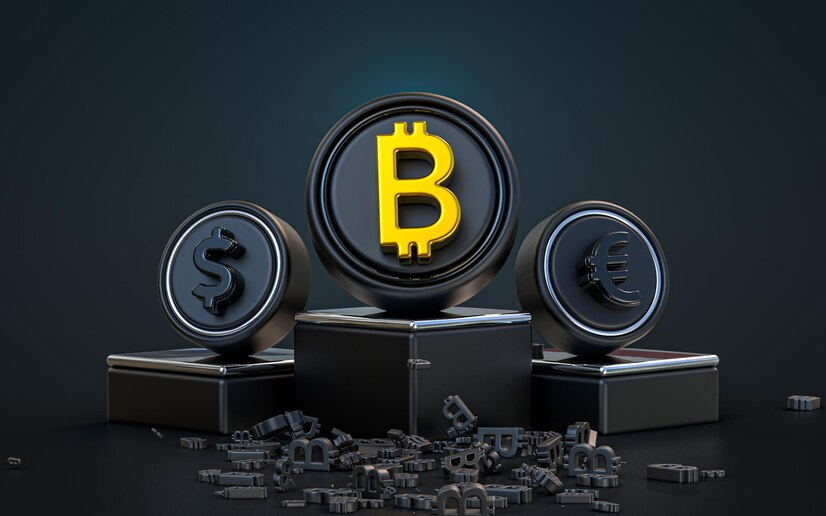Crypto Regulation 2.0: A Global Framework for Digital Asset Governance
- 1 The Birth of Online Platform: Unraveling the Need for Regulation
- 1.1 The First Steps Towards Regulation: Learning from the Past
- 1.2 Building Blocks for a Global Framework: A Collaborative Effort
- 1.3 Defining Digital Assets: Categorization for Clarity
- 1.4 Addressing the Challenges of Decentralization
- 1.5 A Global Watchdog: The Role of International Cooperation
- 1.6 Protecting Investors: Strengthening Security Measures
- 1.7 Balancing Innovation and Regulation: Sandboxing for Progress
- 1.8 The Road Ahead: A More Secure Crypto Landscape
- 2 Conclusion
In the fast-paced world of cryptocurrencies and digital assets, ensuring a safe and secure environment for investors has become a paramount concern. Over the years, the exponential growth of the crypto market has led to an increased need for comprehensive regulations. Governments and financial authorities worldwide have recognized the necessity of establishing a robust framework to govern digital assets effectively. In light of this, a new era of regulation, known as “Crypto Regulation 2.0,” is emerging to create a global standard for digital asset governance. This article explores the key aspects of this evolving regulatory landscape and its impact on the market. Step into the world of profitable trading by visiting the Immediate Momentum.
The Birth of Online Platform: Unraveling the Need for Regulation

As the popularity of cryptocurrencies soared, so did the number of online trading platforms. These platforms allowed users to buy, sell, and trade various digital assets with ease. However, the absence of a comprehensive regulatory framework left a significant loophole that malicious actors could exploit. Instances of fraud, market manipulation, and security breaches began to rise, prompting governments to address the urgent need for stringent regulation in the crypto space.
The First Steps Towards Regulation: Learning from the Past
In the early days of cryptocurrencies, the regulatory approach was somewhat cautious, with many countries taking a “wait and see” stance. However, as the market grew and incidents of fraud and money laundering became more frequent, authorities realized that a proactive approach was necessary. Various jurisdictions started introducing localized regulations, but the lack of a cohesive global framework led to inconsistency and confusion. It became evident that a comprehensive international effort was required to effectively govern digital assets.
Building Blocks for a Global Framework: A Collaborative Effort
Crypto Regulation 2.0 marks a shift towards a coordinated international effort in governing digital assets. Governments, financial institutions, industry experts, and blockchain developers have come together to form a task force aimed at drafting a unified set of regulations. This framework seeks to provide clarity on definitions, categorizations, and compliance requirements, while also addressing the challenges posed by decentralized technologies.
Defining Digital Assets: Categorization for Clarity
One of the primary objectives of Crypto Regulation 2.0 is to provide a clear and concise definition of digital assets. Categorizing cryptocurrencies into distinct classes based on their characteristics and intended use can help determine the appropriate regulatory treatment for each asset. For instance, cryptocurrencies primarily used as a medium of exchange might be subject to different regulations than those considered securities or investment vehicles.
Addressing the Challenges of Decentralization
The decentralized nature of many cryptocurrencies presents unique challenges for regulators. Unlike traditional financial systems, digital assets operate without a centralized authority, making it difficult to enforce compliance and monitor transactions. Crypto Regulation 2.0 aims to strike a balance between maintaining the essence of decentralization and ensuring adequate oversight to protect investors and the market’s integrity.
A Global Watchdog: The Role of International Cooperation
To effectively govern digital assets, global cooperation among nations is crucial. Crypto Regulation 2.0 envisions the creation of an international watchdog that facilitates information sharing, regulatory alignment, and collaborative efforts to combat cross-border illicit activities. By fostering cooperation among governments and regulatory bodies, the framework aims to establish a level playing field for investors worldwide.
Protecting Investors: Strengthening Security Measures
With high-profile hacks and security breaches plaguing the crypto market, ensuring the safety of investors’ funds has become a top priority. Crypto Regulation 2.0 mandates stringent security measures for online trading platforms, including multi-factor authentication, cold storage of assets, and periodic security audits. By bolstering the security infrastructure, regulators aim to restore investors’ confidence and attract mainstream adoption.
Balancing Innovation and Regulation: Sandboxing for Progress
In the fast-paced world of cryptocurrencies, innovation is constant. Crypto Regulation 2.0 acknowledges the importance of fostering technological advancement while safeguarding against potential risks. The framework proposes the establishment of regulatory sandboxes, where blockchain projects can operate under controlled conditions, allowing regulators to observe their impact and determine appropriate regulations without stifling innovation.
The Road Ahead: A More Secure Crypto Landscape
Crypto Regulation 2.0 marks a significant step forward in the maturation of the crypto market. By establishing a global framework for digital asset governance, it aims to create a safer and more secure environment for investors and businesses alike. While challenges lie ahead in achieving international consensus and harmonization, the potential benefits of a well-regulated crypto landscape far outweigh the complexities. With Crypto Regulation 2.0 in place, the future of cryptocurrencies and blockchain technology appears brighter than ever before.
Conclusion
As Crypto Regulation 2.0 takes shape, the world is witnessing a pivotal moment in the evolution of the crypto market. The collaborative effort to establish a global framework for digital asset governance signifies a commitment to protecting investors and fostering innovation. By defining and categorizing digital assets, addressing the challenges of decentralization, and strengthening security measures, regulators aim to strike a delicate balance between oversight and the preservation of the essence of cryptocurrencies. As this new era of regulation unfolds, the world awaits a safer, more secure, and prosperous crypto landscape, where trust and confidence become the cornerstones of a promising future.

















